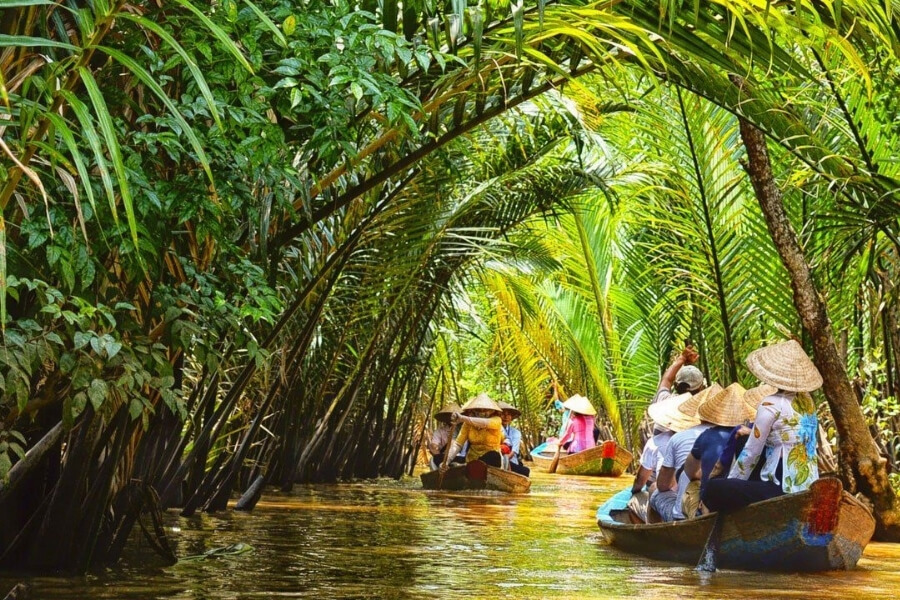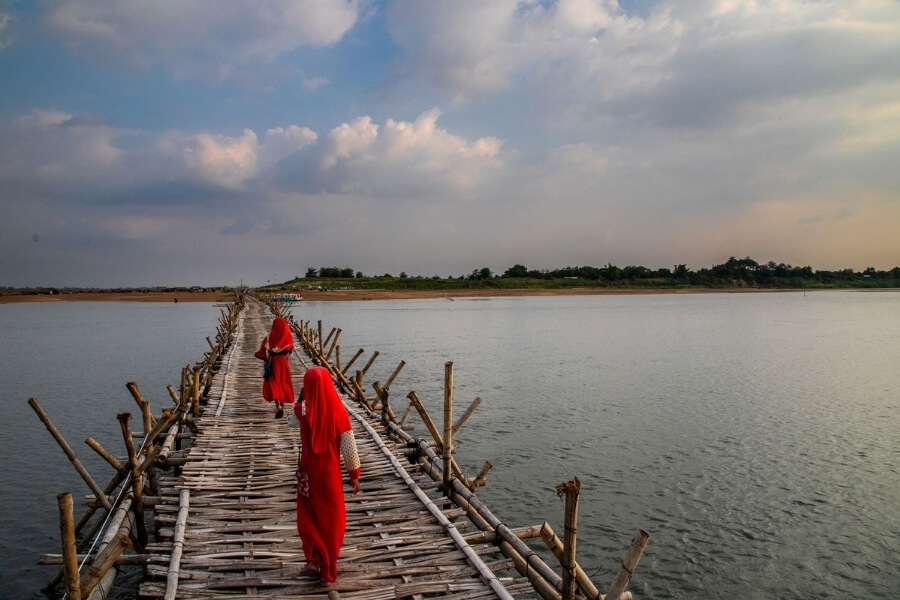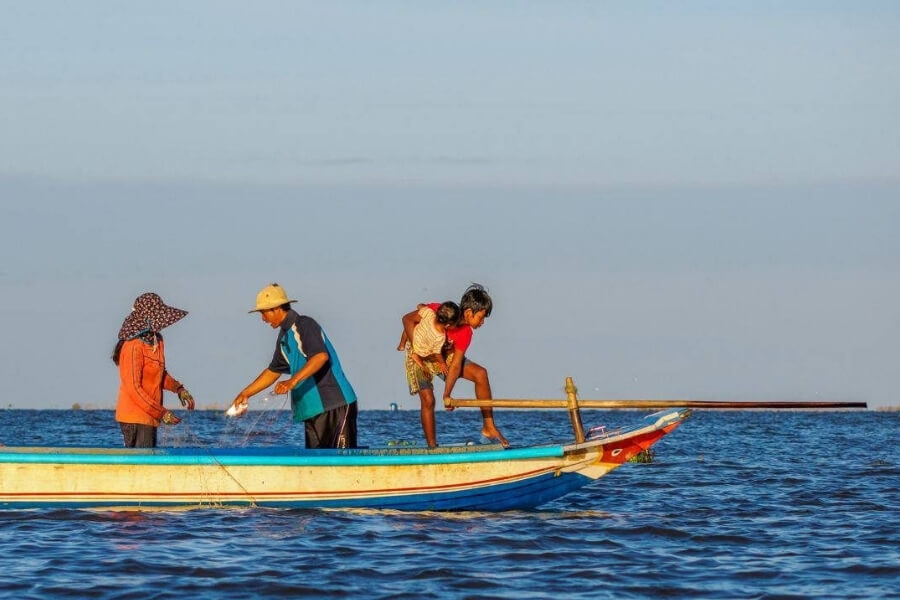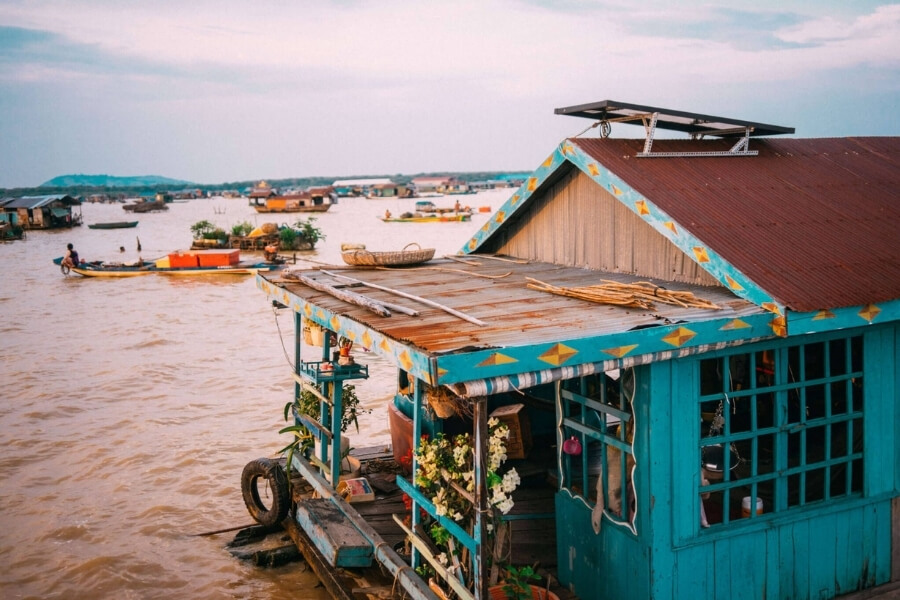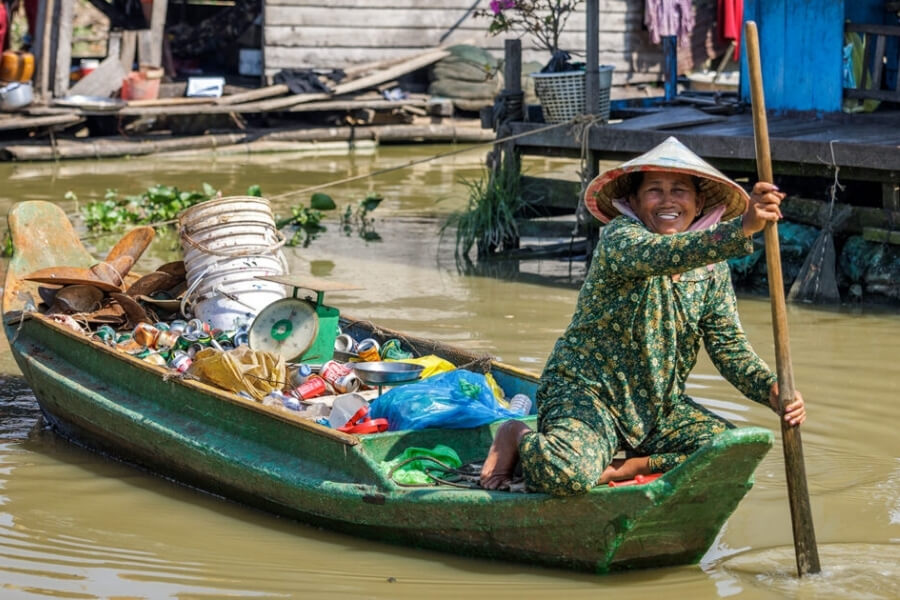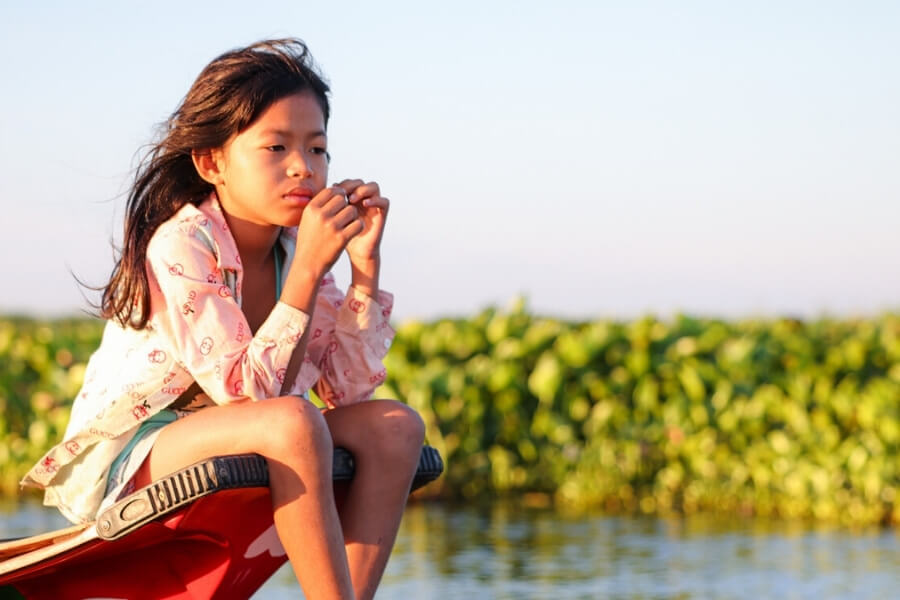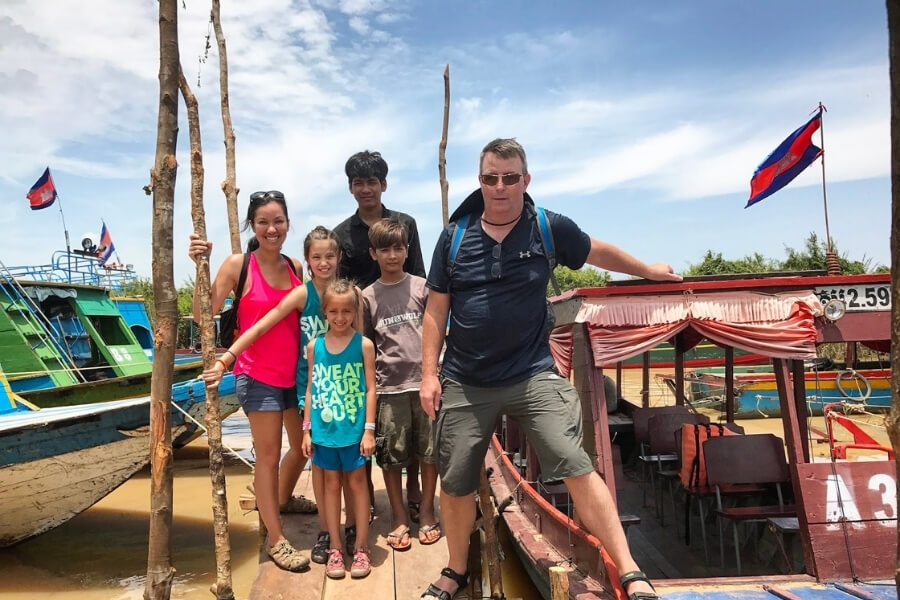The Mekong River weaves through Cambodia like a vital artery, sustaining millions with its rhythmic flow and fertile banks. For travelers joining Indochina tours, this mighty river offers an authentic glimpse into local life - where ancient traditions meet the demands of modern survival. In the riverside communities along its course, everyday existence unfolds in harmony with the water's ebb and flow. This exploration delves into the essence of Mekong daily life in Cambodia, revealing how the river shapes the routines, cultures, and challenges of those who call its shores home. From bustling markets to serene floating homes, the Mekong offers a window into a world where resilience and adaptability define the human spirit.
The Heartbeat of the Mekong Delta in Cambodia
The Mekong Delta in Cambodia, a sprawling network of waterways stretching across provinces like Kampong Cham, Kandal, and Prey Veng, serves as the lifeblood of agricultural and cultural existence. Here, Mekong daily life in Cambodia begins with the dawn’s first light glinting off the water, signaling the start of fishing, farming, and trade. Villagers navigate narrow channels in slender wooden boats, casting nets to harvest fish that sustain both household diets and local markets. The delta’s alluvial plains yield abundant crops - rice, mangoes, bananas, and vegetables - forming the backbone of rural economies and feeding communities across the region.
During the monsoon season, the Mekong swells, depositing nutrient-rich silt that rejuvenates fields, a phenomenon farmers have relied on for centuries. This seasonal dance ensures bountiful harvests but demands adaptability, as flooding reshapes landscapes and livelihoods. In floating markets, vendors barter goods from boats laden with produce, their voices mingling with the splash of oars, embodying the vibrancy of daily life in Cambodia. The Mekong Delta in Cambodia, though often overshadowed by its Vietnamese counterpart, radiates a unique Khmer charm, blending ancient agricultural practices with the river’s timeless flow.
The sensory richness of the delta captivates: children splash in muddy shallows, the aroma of grilled fish and lemongrass wafts from homes, and the hum of boat engines echoes through the morning mist. These scenes evoke a profound sense of continuity, where traditional practices endure amid modern challenges. For travelers, the Mekong Delta in Cambodia offers an authentic glimpse into a lifestyle inseparable from the river, where each day unfolds in sync with its currents.
Daily Life in Cambodia’s Riverside Villages
In riverside villages along the Mekong, such as those near Phnom Penh, Kratie, or Stung Treng, daily life in Cambodia pulses with a rhythm tied to the water’s flow. At sunrise, fishermen glide across glassy surfaces, their nets capturing fish like prahok, a fermented staple central to Khmer cuisine. Women prepare meals, blending fresh catches with herbs, tamarind, and spices, while others mend nets or weave baskets from river reeds. These tasks, handed down through generations, reflect the communal spirit that defines Mekong daily life in Cambodia.
Education and healthcare adapt ingeniously to the river’s presence. Floating schools and boat-based clinics deliver services to remote hamlets, ensuring access despite seasonal floods that can isolate communities. In the afternoons, villagers might repair homes built on stilts or tend to rice paddies, their work punctuated by the laughter of children playing along the banks. Evenings bring families together under lantern light, where storytelling sessions preserve oral histories, strengthening community bonds and cultural identity.
The Mekong’s influence permeates every facet of daily life in Cambodia. The vibrant hues of sarongs drying on bamboo poles, the distant chants of monks from riverside pagodas, and the rhythmic creak of oars create a sensory symphony. These villages, though often modest, exude resilience, as residents navigate challenges like poverty and limited infrastructure with remarkable ingenuity. For visitors, the authenticity of Mekong daily life in Cambodia leaves an indelible mark, evoking awe at the delicate balance between human life and the river’s embrace.
The Ethereal Cambodia Floating Villages
The floating villages of Tonle Sap Lake, such as Kampong Phluk, Chong Khneas, and Kampong Luong, embody the extraordinary adaptability of Mekong daily life in Cambodia. Here, entire communities live on water, their homes - constructed on boats or high stilts - rising and falling with the lake’s dramatic seasonal shifts. These Cambodia floating villages are a testament to human resilience, thriving in an environment where land is fluid and unpredictable.
Daily routines in these aquatic settlements revolve around the water’s rhythms. Fishermen haul in catches of silver fish that feed families and fuel trade, while vendors in canoes create impromptu markets, offering vegetables, household goods, and handmade crafts. Children paddle to floating schools, their classrooms swaying gently with the lake’s currents, while floating temples ensure spiritual life remains vibrant. The Tonle Sap’s unique reverse flow, driven by the Mekong’s seasonal surge, brings nutrient-rich waters that sustain fisheries, supporting the livelihoods of thousands.
Visiting Cambodia floating villages reveals a world of contrasts: the tranquility of waterborne life juxtaposed against the challenges of storms, shifting currents, and seasonal floods. Residents construct homes from bamboo, recycled barrels, and other materials, designed to withstand the lake’s volatility. The ingenuity of these communities, coupled with their deep connection to the water, creates a poetic existence that feels almost otherworldly. Mekong daily life in Cambodia in these villages evokes wonder, as the boundaries between land and water blur, offering a glimpse into a lifestyle that dances with the river’s flow.
The emotional resonance of these villages lies in their simplicity and strength. A grandmother mending a fishing net, a child diving into the lake with a gleeful splash, or a vendor calling out wares from a canoe - these moments capture the heart of daily life in Cambodia, where the Mekong is both home and provider.
Cultural Heritage Woven into Mekong Daily Life
Cultural traditions are the soul of Mekong daily life in Cambodia, with the river serving as both muse and sustainer. Festivals like Bon Om Touk, the annual Water Festival, celebrate the Mekong’s reverse flow with colorful boat races, fireworks, and communal feasts, uniting villages in shared joy. These events blend ancient Khmer rituals with modern festivity, reinforcing the river’s role as a cultural cornerstone.
Livelihoods along the Mekong are diverse yet intrinsically tied to the water. Beyond fishing, many engage in aquaculture, raising fish in floating cages, or cultivate floating gardens of herbs and vegetables that adapt to water levels. Artisans craft pottery, baskets, and textiles inspired by river motifs, their wares sold to locals and tourists alike. The Cham communities along the Mekong add cultural depth, their mosques and silk-weaving traditions enriching the region’s mosaic. These minority groups, often living in stilted villages, contribute vibrant patterns and practices to daily life in Cambodia.
Spiritual practices further deepen the river’s significance. Offerings to river spirits for safe voyages and bountiful catches are common, while Buddhist monks bless boats in ceremonies that blend animism with Khmer Buddhism. These rituals foster environmental stewardship, as communities recognize the Mekong’s health as vital to their survival. The emotional weight of these traditions is profound, connecting past and present in a continuous thread. Elders teach the young to fish, weave, or navigate the river’s currents, ensuring the continuity of Mekong daily life in Cambodia.
The Mekong thus becomes a living archive, its bends and tributaries holding stories of endurance, celebration, and adaptation. For those who witness these traditions, the experience evokes a sense of timelessness, as if the river itself guards the heritage of its people.
Challenges Facing Riverside Communities
Despite its life-giving presence, Mekong daily life in Cambodia faces mounting challenges. Climate change intensifies floods and droughts, disrupting fishing and farming cycles critical to survival. Upstream dams, particularly in neighboring countries, alter the Mekong’s flow, reducing sediment deposits essential for soil fertility and fish migration. In the Mekong Delta in Cambodia, rising sea levels introduce salinity intrusion, threatening rice paddies and forcing farmers to experiment with salt-tolerant crops or alternative livelihoods.
Cambodia floating villages contend with additional pressures, including pollution from plastic waste and overfishing, which deplete fish stocks and strain local economies. Urban migration poses another threat, as younger generations leave for cities like Phnom Penh or Siem Reap, leaving villages with aging populations and eroding traditions. These challenges evoke a poignant urgency, highlighting the fragility of ecosystems that have sustained communities for centuries.
Yet, resilience shines through. Community-led initiatives, such as mangrove restoration projects and sustainable fishing cooperatives, demonstrate proactive efforts to protect the river’s health. Organizations like the Mekong River Commission work with local governments to monitor water quality and promote sustainable practices, offering hope for the future. These efforts underscore the determination of riverside communities to preserve their way of life, ensuring Mekong daily life in Cambodia endures.
Sustainable Tourism: Immersing in Mekong Daily Life
For travelers eager to explore Mekong daily life in Cambodia, sustainable tourism offers meaningful ways to engage with riverside communities. River cruises from Siem Reap to Phnom Penh provide immersive journeys, with stops at villages for homestays that support local economies. Kayaking tours through mangrove forests reveal hidden wildlife, while cycling along delta trails offers intimate encounters with the landscape and its people.
Ethical tourism operators prioritize low-impact practices, ensuring communities benefit without exploitation. Participating in cooking classes, where visitors learn to prepare Khmer dishes like amok or prahok ktis, fosters genuine connections with locals. Weaving workshops, where artisans share techniques for crafting baskets or textiles, deepen appreciation for the skills embedded in daily life in Cambodia. These experiences enrich travelers with shared stories and cultural insights, creating memories that resonate long after the journey ends.
The emotional impact of these encounters lies in their authenticity. Sharing a meal with a fishing family or paddling alongside a vendor in a floating market offers a window into the resilience and warmth of Mekong daily life in Cambodia. By choosing responsible travel, visitors contribute to preserving the river’s ecosystems and cultural heritage, ensuring future generations can experience its magic.
Preserving the Legacy of the Mekong
The Mekong River weaves a narrative of survival, culture, and adaptation through Cambodia’s riverside communities. From the fertile Mekong Delta in Cambodia, where farmers and traders thrive, to the ethereal Cambodia floating villages, where life floats with the lake’s rhythms, daily life in Cambodia reflects a profound connection to the water. The river is more than a resource - it is a partner, a teacher, and a storyteller, shaping the identities of those who depend on it.
As these communities navigate modern challenges, from climate change to economic pressures, their resilience inspires. Community initiatives and sustainable tourism offer pathways to protect this delicate balance, ensuring the Mekong’s legacy endures. Travelers are invited to explore this vibrant world with mindfulness, engaging with its people and traditions in ways that honor their heritage. By immersing in Mekong daily life in Cambodia, one not only discovers a unique way of life but also contributes to its preservation, carrying forward the river’s timeless story.

